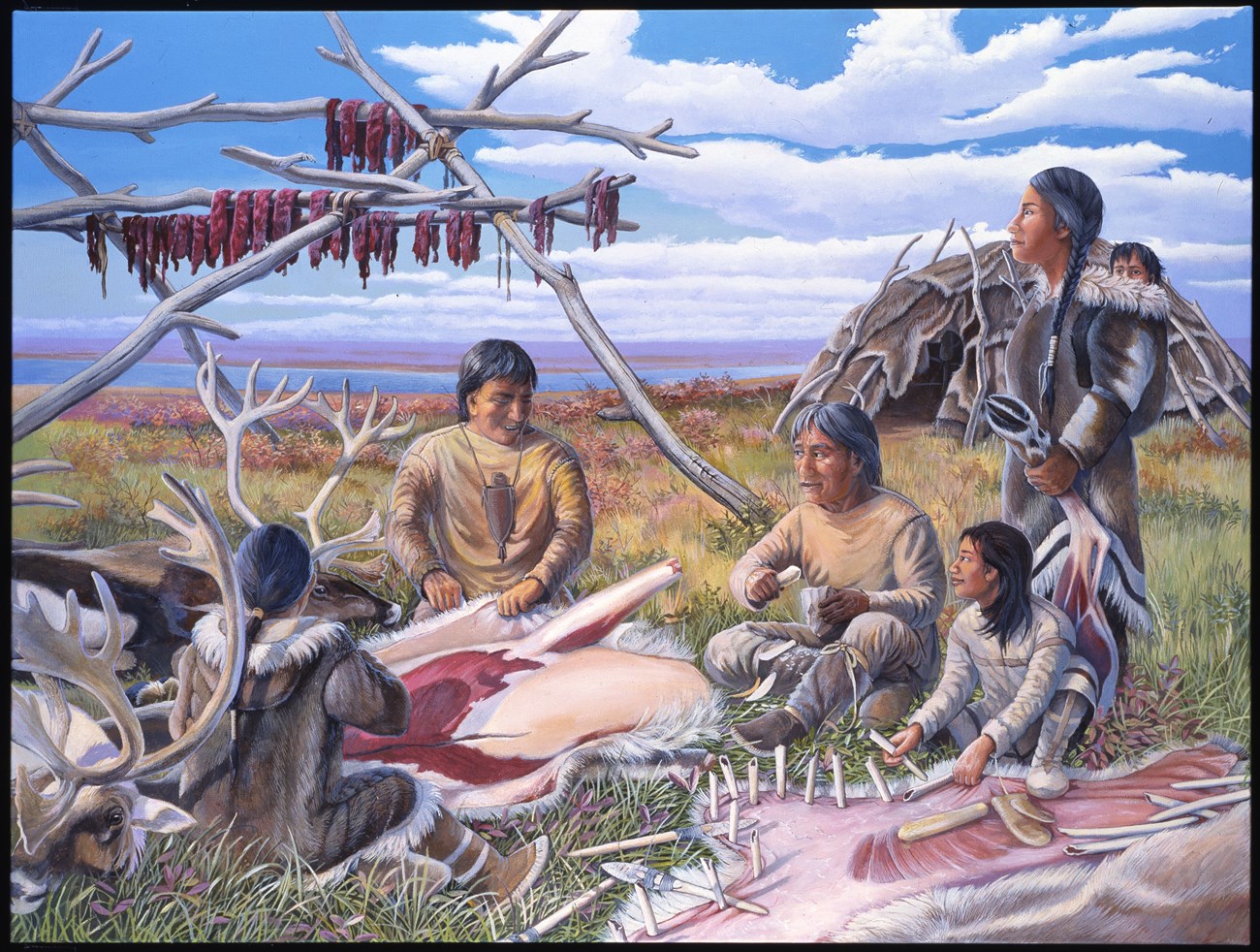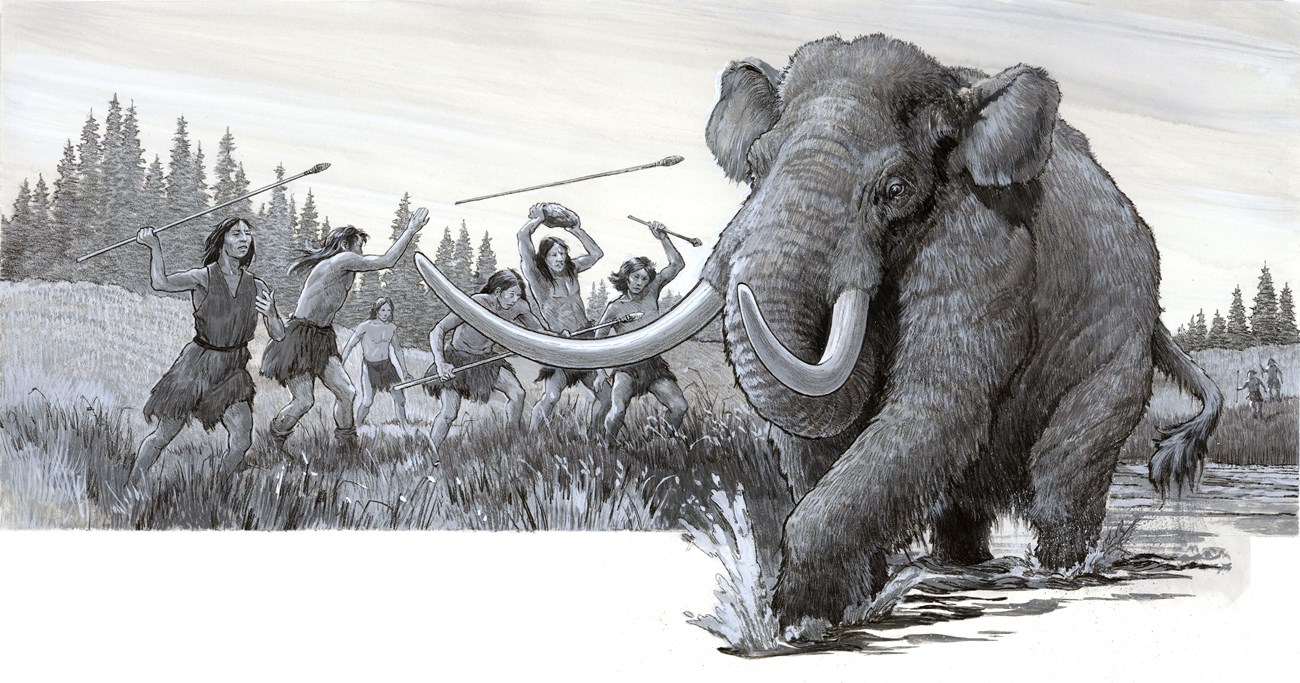Last updated: November 23, 2021
Article
Discover the Paleoindian People

Ohio History Connection
Dates
13,000 - 10,000 years ago
Imagine
Above the Cuyahoga River, on a glacial knoll, stands a group of young men with spears at the ready. Below them a beautiful sight, caribou. They work together, moving quickly. At the end of the hunt, they pull their weapons from the carcasses that will become food, clothing, and tools. Lost in the excitement are a few stone points. Years later, archeologists excavating along Everett Road uncover a single stone spear point, the only evidence of a hunt that took place thousands of years ago.
Following Big Game
This scene may have played out time and time again. Paleoindians were the first known people in what is now Ohio. These nomadic big game hunters entered the Cuyahoga Valley after the Wisconsin Glacier retreated. Traveling in small groups allowed them to follow their food. Caribou herds were their main prey. They also hunted bison, white-tailed deer, and other large animals that roamed across the region. Occasionally, they took down a mammoth or a mastodon, but those butchering sites are rare. The “spruce parkland” of this period did not offer much else that people could eat. This open forest was a patchwork of evergreen trees and sedge wetlands.
Their constant movement meant that they traveled light and left few artifacts behind. Evidence of their lives in the Cuyahoga Valley is sparse—just single spear points and waste flakes. Crafting these points involved finding a good piece of flint, striking it with another stone, and shaping the point with antler. This technique is called flint-knapping.
Flint for tool-making was one of their most important resources. The earliest Paleoindian people arrived with tools made of flint (a type of chert) from southern Indiana. Later people used local materials, preferring flint from Coshocton and Licking counties which are southwest of the Cuyahoga Valley.

National Park Service
Places to Visit
As Lake Erie formed, the water table changed. Paleo sites may still exist, but may not be accessible to archeologists. As you explore Cuyahoga Valley, consider how different the landscape and climate was when the Paleoindians camped here. If you do notice any evidence of prehistoric people, note that it is illegal to collect artifacts on national park land.
The best place to learn more is at the Cleveland Museum of Natural History. The museum excavated the largest site in this area: Paleo Crossing in Sharon Township.

National Park Service
